


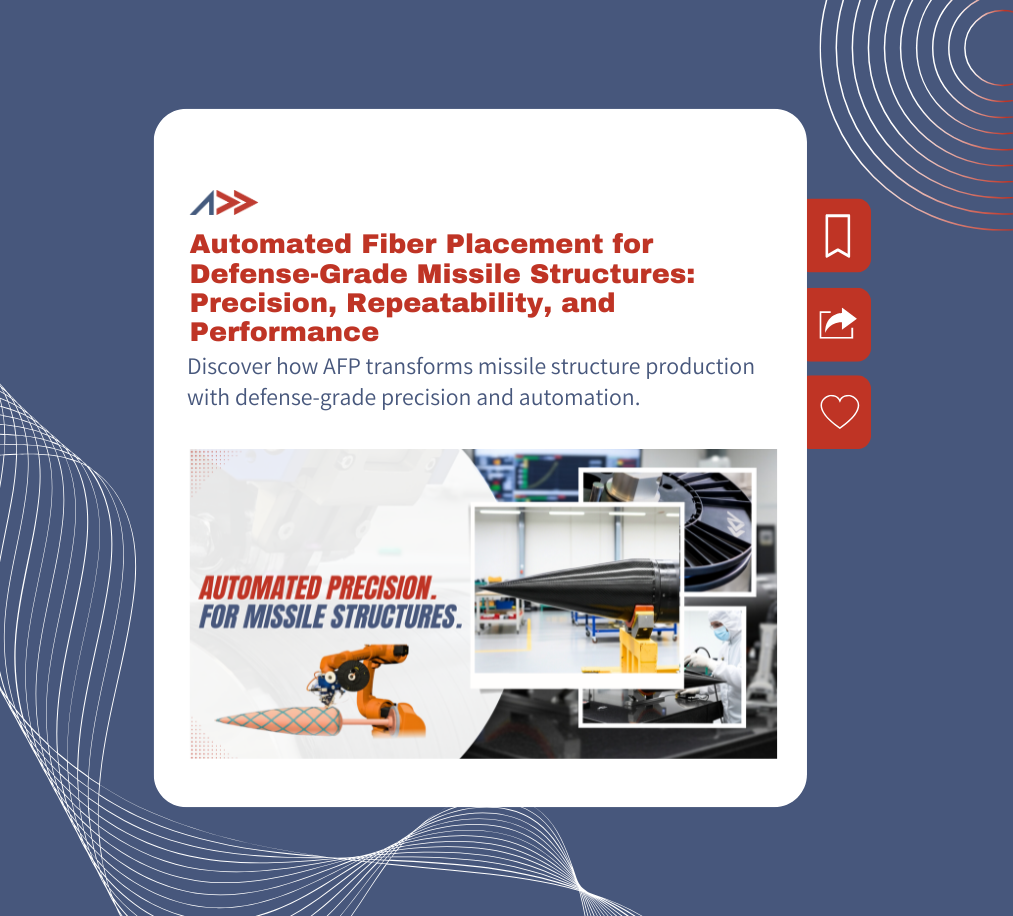


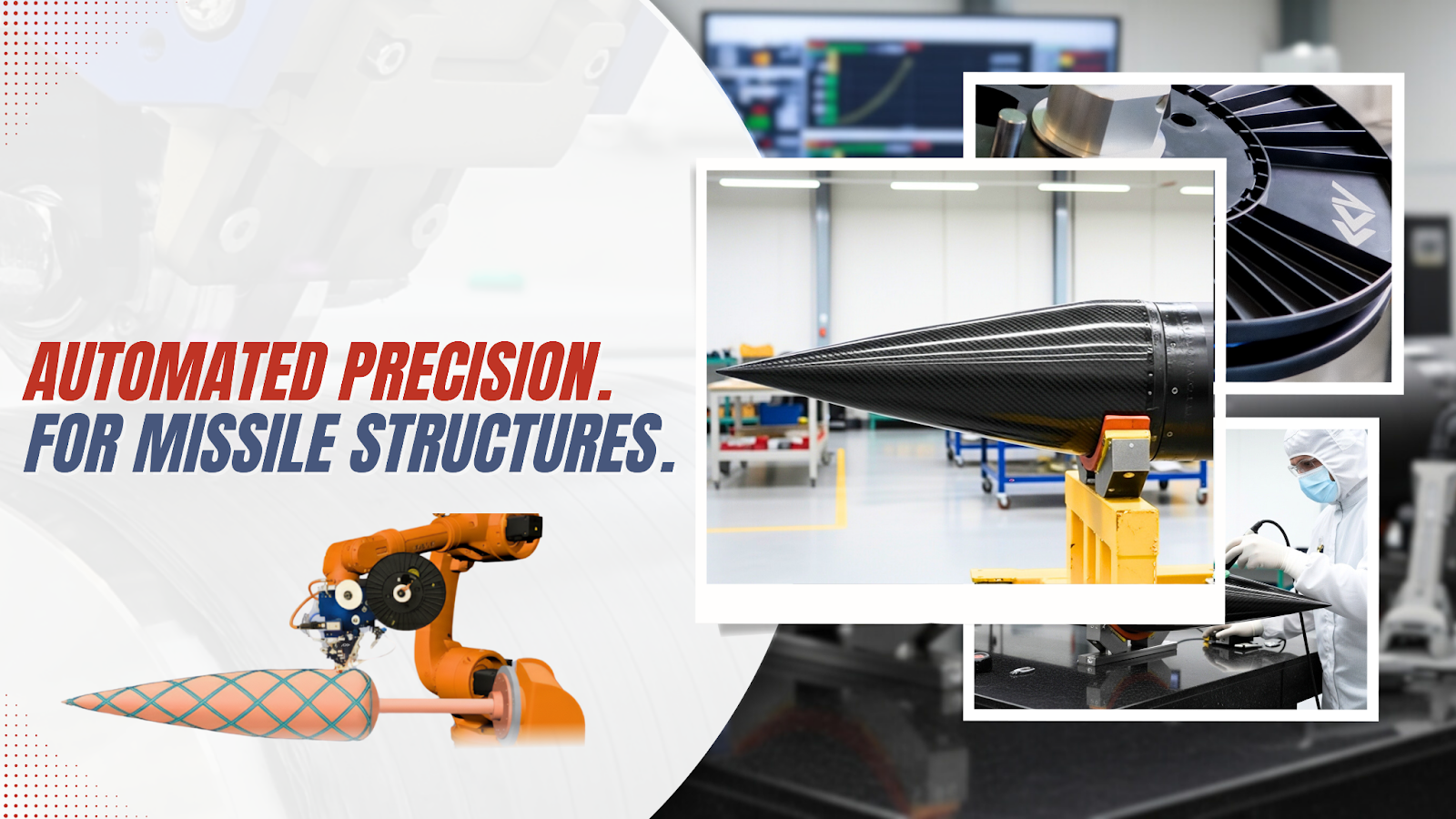
In the defense industry, missile structures demand the highest levels of precision, reliability, and performance. Unlike commercial applications, these mission-critical components must perform flawlessly every single time—failure is simply not an option. Automated Fiber Placement (AFP) technology has emerged as a game-changing solution for manufacturing complex missile components such as nose cones, aerodynamic fairings, and control surfaces that meet stringent military specifications while ensuring repeatability and eliminating manual layup inconsistencies.
Defense-grade missile structures present unique manufacturing challenges that demand precise fiber steering, variable thickness transitions, and tight dimensional tolerances. Similar to aerospace requirements, the defense industry maintains exceptionally high-quality standards where components must withstand extreme conditions including high vibration loads during launch, pressure loads from propulsion systems, and intense aerodynamic heating during flight.
Placement Accuracy Standards:
For defense-grade structures, AFP systems must achieve placement tolerances where tows over 300mm wide maintain gaps not exceeding 6.35mm with zero overlap. Start and stop accuracy must remain within ±2mm at placement speeds up to 1 m/s on straight sections, while ply drop strategies must be minimally intrusive to maintain laminate integrity.
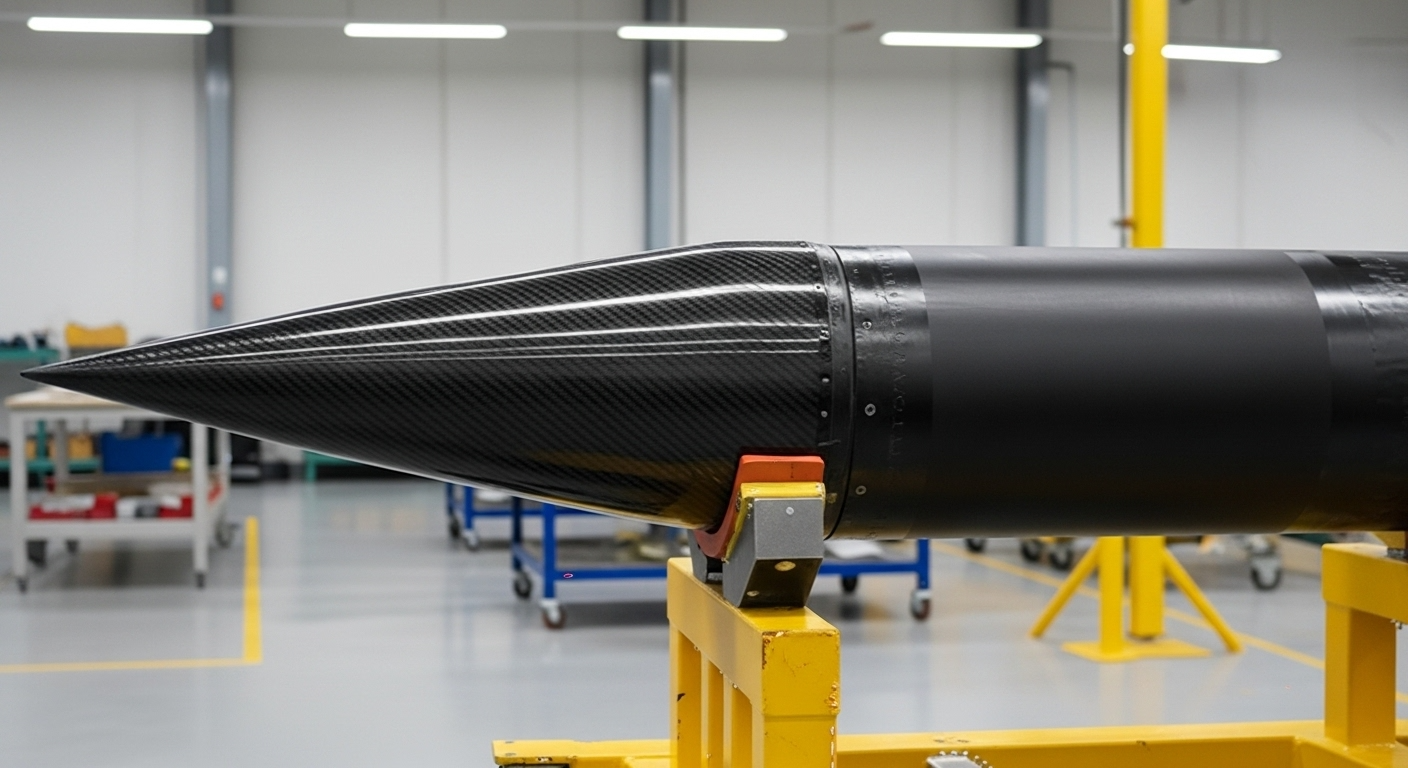
Optimization Strategies:
The optimization focus centers on three critical areas. First, eliminating wrinkles and defects as fiber steering occurs on complex surfaces. The software must analyze and flag areas where fiber steering exceeds recommended limits (typically 800-1000mm radius for aerospace-grade materials, potentially down to 600mm with segmented rollers), alerting planners to segment the layup approach while minimizing wrinkling.
Second, managing ply drop-offs in converging or diverging areas requires strategic segmentation, progressive ply dropping as sections narrow, and creating ramps at drop-off locations to prevent stress concentration. Third, successful AFP implementation demands design-for-manufacturing integration where designers avoid excessively tight radii, consider AFP constraints during finite element design, and minimize aggressive fiber steering that leads to defects.

While manual processes may be suitable for one-off prototypes, AFP technology becomes essential for repeatable production. As a robotized process, AFP offers inherent repeatability—once a layup process is validated with specific pressure, temperature, and placement parameters, it can be recreated consistently across production runs.
Comprehensive Real-Time Quality Control:
AFP systems incorporate multiple sensor technologies for continuous quality assurance. During placement, tension and pressure sensors monitor fiber application parameters, temperature sensors ensure consistent heating throughout the process, and process control systems maintain all parameters within specified tolerances.
Post-placement verification includes thermal cameras that monitor heat dissipation patterns to detect anomalies, 3D scanning sensors that generate point cloud data to verify gaps and overlaps are within specifications, and visual inspection cameras that provide additional verification and documentation.
This integrated sensor suite enables near 100% layup accuracy by identifying defects layer-by-layer, allowing operators to make immediate corrections rather than discovering issues only after curing during non-destructive testing (NDT). This real-time feedback eliminates material waste and ensures every component meets military specifications.
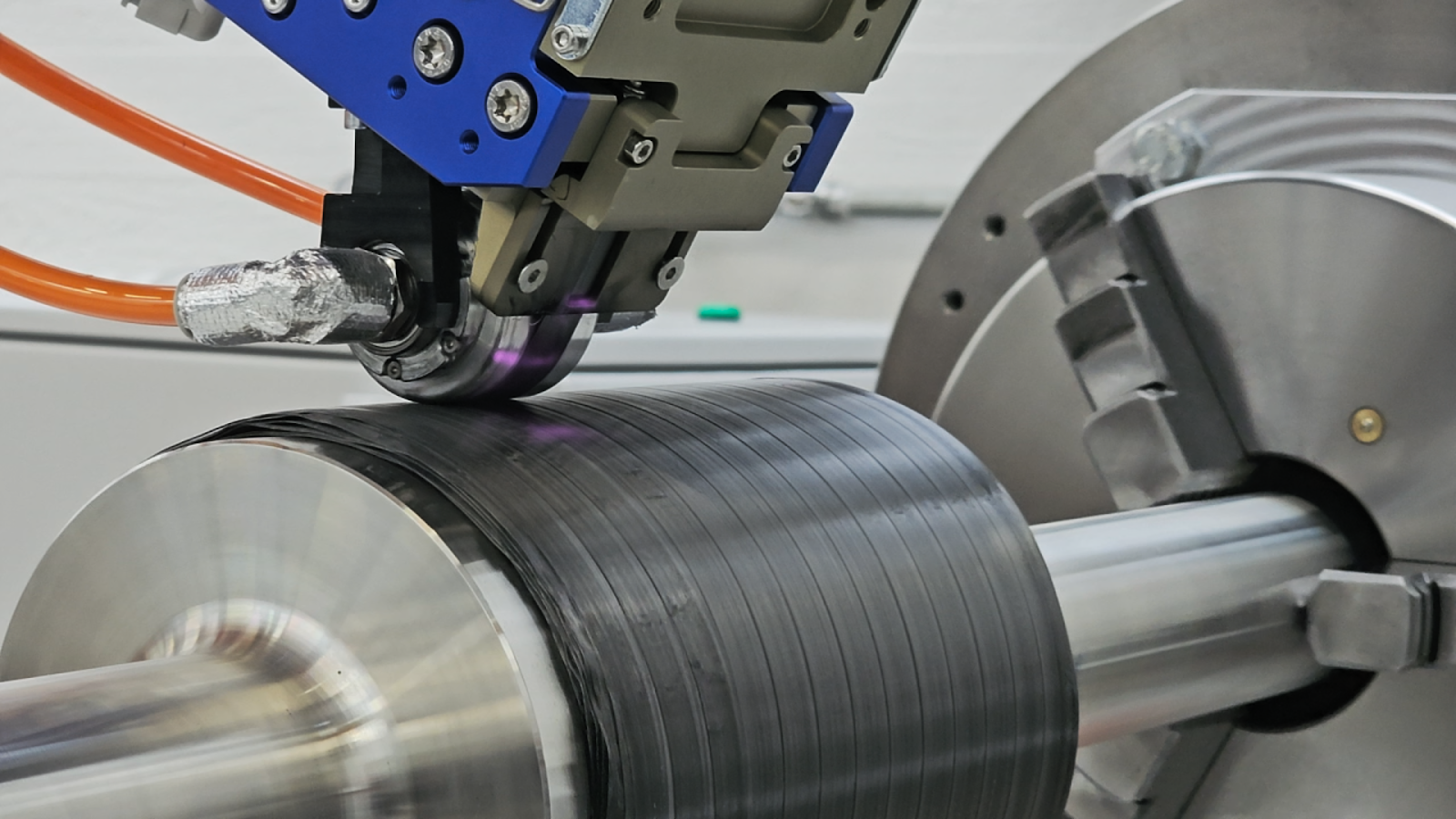
Precision Motion Platforms:
The choice of motion platform directly impacts achievable tolerances. Robotic systems offer flexibility and cost-effectiveness with tolerances suitable for most AFP applications, while CNC gantry systems provide superior precision and robustness, ideal for the most demanding military specifications.

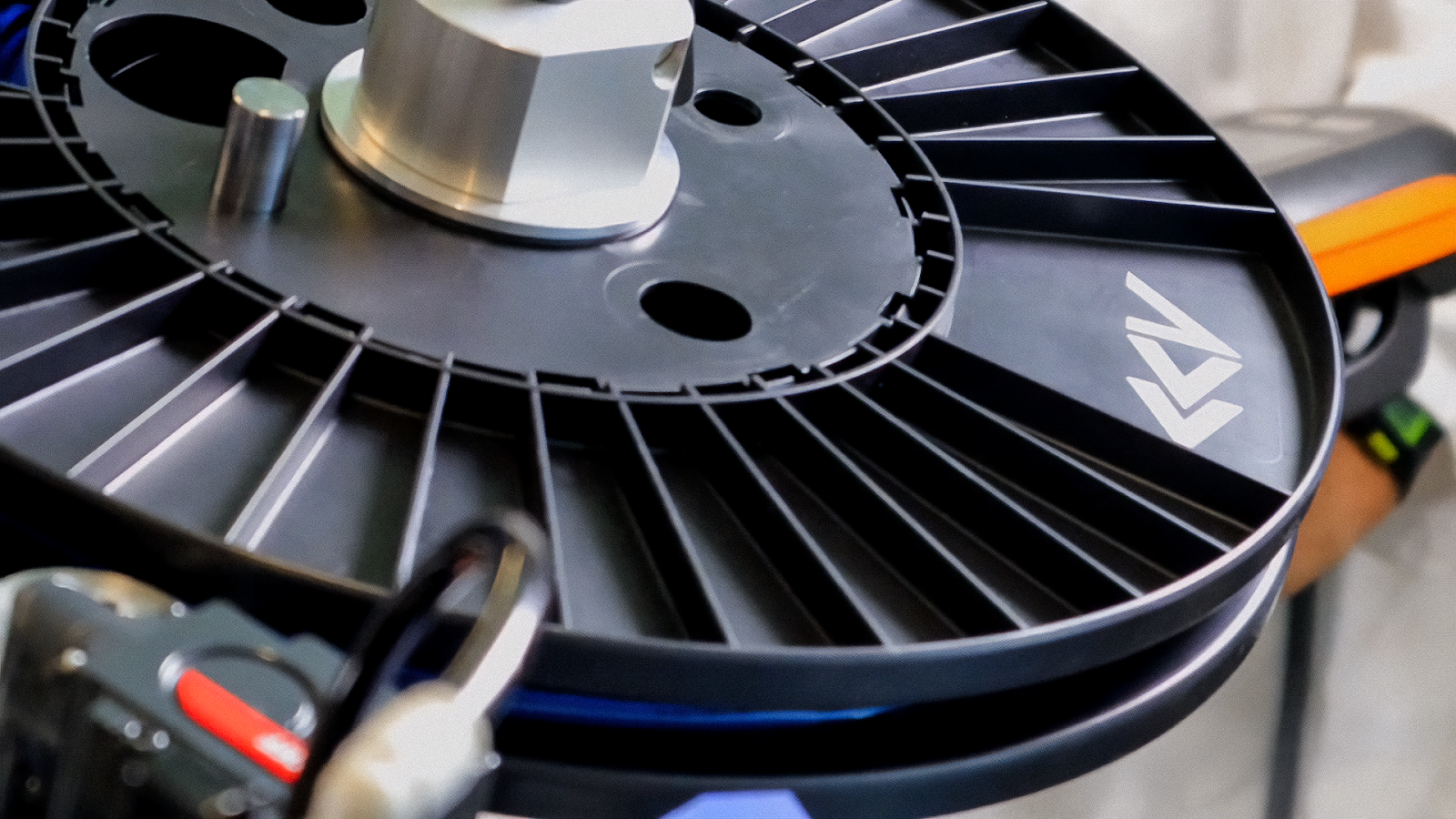
Thermoset prepregs remain the primary choice for missile structures due to their proven performance under extreme conditions. Success begins with approved material suppliers providing consistent fiber volume content and quality certifications ensuring material uniformity throughout rolls.
AFP provides significant advantages with thermosets, including controlled heating, pressure, and tension during placement. Most notably, AFP eliminates debulking for thick laminates—a process typically required every 4-8 layers in manual layup. The AFP process applies consistent pressure with each pass, performing continuous "micro-debulking" that enables direct progression to final cure bagging, significantly reducing production time while achieving void content below 2% through controlled autoclave or out-of-autoclave curing.
Thermoplastic composites present both opportunities and challenges for missile structures. Thermoplastic AFP attempts to achieve both placement and consolidation simultaneously as the machine moves at variable speeds—a complex dance where flat plates have been successfully consolidated, but large, complex structures still require post-consolidation processes and stress-relieving operations.
The proven approach for thermoplastic AFP involves placement with a reasonable degree of consolidation, followed by a post-cure cycle at near glass transition temperature (Tg+) under vacuum for thermal stress relief and full consolidation. The higher the degree of initial consolidation achieved during placement, the more the post-cure cycle can eventually be minimized or eliminated—a goal that continues to drive technology development.

AFP technology represents a paradigm shift in defense composite manufacturing, offering capabilities that manual processes simply cannot match. The combination of unmatched repeatability for mission-critical components, real-time quality control that eliminates costly post-cure defect discovery, and optimized production efficiency through elimination of debulking cycles makes AFP indispensable for modern defense manufacturing.
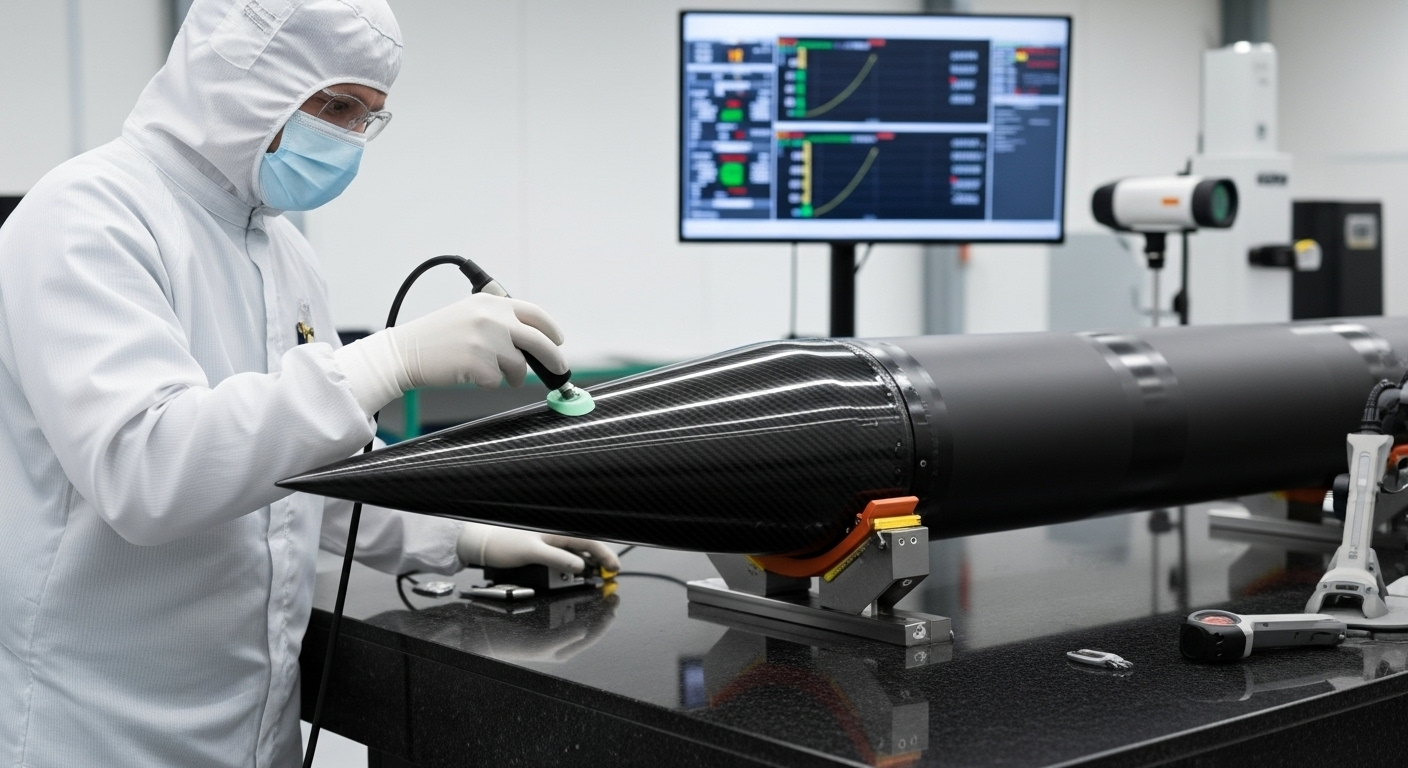
The precision placement meeting stringent military specifications, coupled with comprehensive sensor integration and process control, ensures that every missile component performs flawlessly under the most extreme conditions. As missile designs become increasingly complex and performance requirements continue to escalate, AFP technology provides the manufacturing capability necessary to meet tomorrow's defense challenges today.
The technology enables manufacturers to achieve what was previously impossible: consistent, repeatable production of complex composite structures with validated quality at every layer, reducing time-to-market while increasing confidence in component performance.

At Addcomposites, we understand the critical nature of defense applications and the uncompromising standards required for missile structures. Our AFP solutions are specifically designed to meet and exceed military specifications while providing the flexibility, precision, and reliability that defense manufacturers demand.

Our Solutions:
The AFP-XS and AFP-X systems deliver industrial-grade automated fiber placement capability with the precision required for defense-grade structures. Paired with our AddPath software, these systems provide intuitive path planning, real-time process control, and comprehensive quality monitoring that ensures every layup meets your exact specifications.
Why Choose Addcomposites:
We provide more than just equipment—we deliver complete AFP solutions backed by deep composites expertise and dedicated support. Our systems are designed for ease of integration, whether you're working with robotic platforms or CNC gantries, and our team works closely with you to optimize processes for your specific missile component requirements.
From initial process development through production scale-up, Addcomposites is your partner in advancing defense composite manufacturing capabilities. Our technology is proven in demanding applications, and our commitment to innovation ensures you'll have access to the latest advancements in AFP technology.

Ready to elevate your missile structure manufacturing capabilities with automated fiber placement technology? Addcomposites is here to help you achieve precision, repeatability, and performance for your mission-critical components.
Contact us today to:
Visit www.addcomposites.com or email info@addcomposites.com to begin your journey toward advanced automated composite manufacturing.
Addcomposites - Advancing the Future of Composite Manufacturing